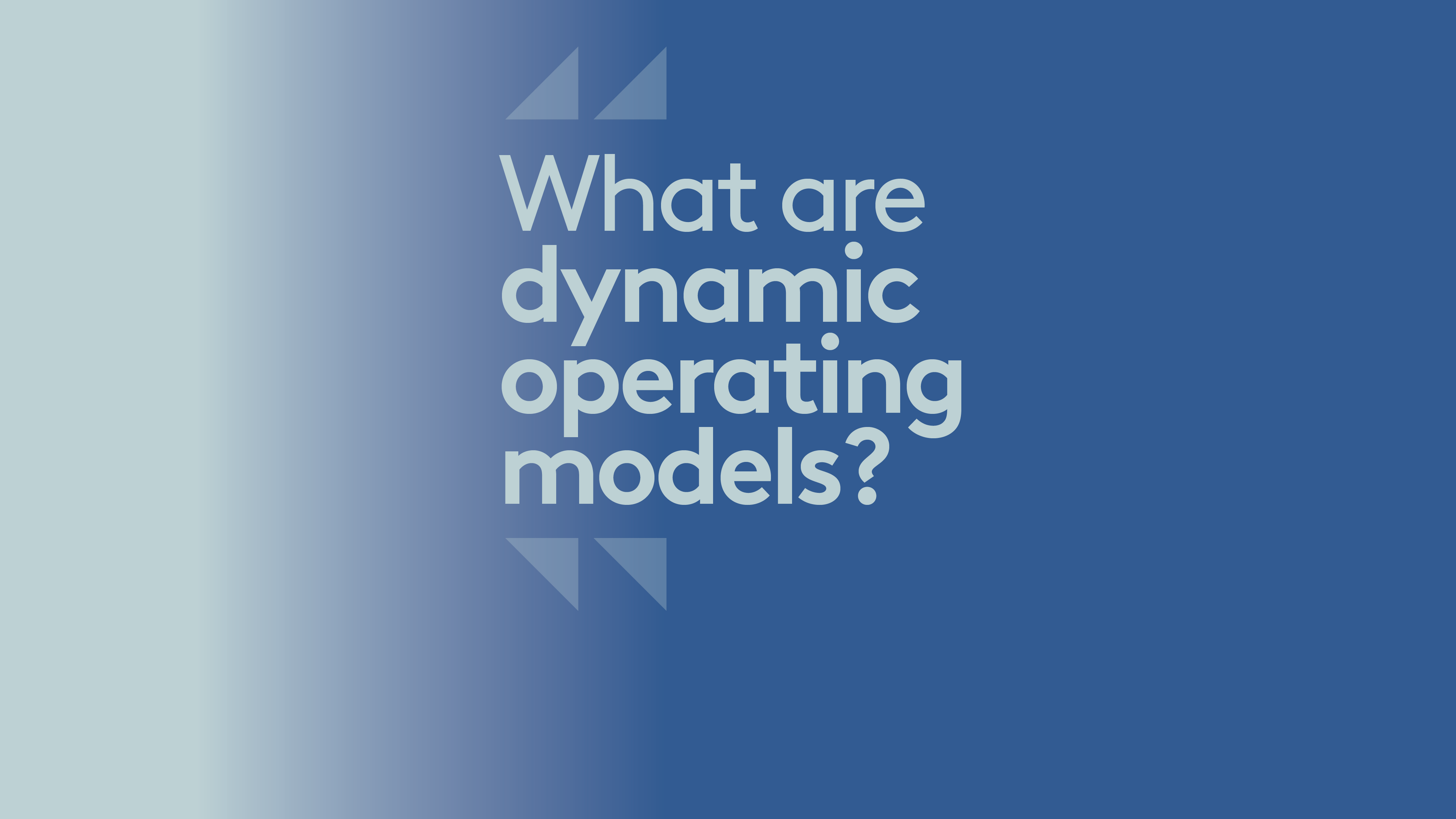
Tom Loosemore
Founder

We coined the term 'Dynamic Operating Model' to articulate a better way for organisations to adapt to change.
The term represents a reimagining of how organisations think about structuring themselves. It recognises that the static, target-driven operating models of the past no longer fit today’s fast-moving, unpredictable world. Here, we explain how the concept of a Dynamic Operating Model emerged across our work with UK and global organisations, and why it’s vital for organisations seeking to thrive in the digital age.
Organisations often try to adopt a Target Operating Model (TOM) in an attempt to achieve alignment. It is based on the idea that if you describe a model of the desired future in a way that is simple, clear and compelling, then this operating model will become a reality. Teams and individuals then refer to the TOM when they make decisions, eventually aligning everything in the organisation to this model.
The fundamental issue with Target Operating Models, however, is that they assume that a perfect organisational shape can designed upfront and that it should rarely change. These are both false assumptions.
A Target Operating Model is guaranteed to give you a comforting sense of false certainty about your organisation’s future and a defined plan to work towards. But it may be a long time before you find out you have been going in the wrong direction.
The idea of a “Dynamic Operating Model” emerged as a response to these shortcomings. It builds on the principles of the “test-and-learn” approach, where small, incremental changes are made based on continuous feedback.
By reframing this approach within the familiar language of 'operating models', we’ve created a concept that resonates with organisations, while representing a fundamental shift in how they think about planning and delivery.
Dynamic Operating Models promote:
Rather than rigidly defining a future shape of an organisation, dynamic operating models encourage organisations to stress the outcomes they want from their organisational design. These organisational outcomes act as a “north star” rather than a fixed destination, allowing for adjustments based on new insights. In essence, just like your services should continue to evolve to meet the needs of your users, so should your organisational shape.
Continuous user feedback is at the heart of dynamic models. By starting small, organisations can iterate the design of their organisation based on real-world responses.
Breaking down silos is essential. Policy, operations, IT and myriad other functions work together from the start, enabling a holistic approach to problem-solving.
Organisations must accept that technology, markets and user needs will evolve. A dynamic operating model makes changing how you organise yourself a regular, normal thing, rather than a major institutional disruption.
We’ve worked with numerous organisations to adopt Dynamic Operating Models, including NHS England, DEFRA and BT, so we know about the challenges organisations face in implementing them.
For instance, big consultancy firms often promote Target Operating Models because they offer a sense of certainty. Even when they try to adopt iterative approaches, they may fall back into old habits. At the same time, support functions like HR, procurement and finance are not always equipped to operate dynamically, creating bottlenecks in the system by demanding certainty when there is none to be found.
Confronting these obstacles will mean challenging deeply entrenched behaviours and ways of working in your organisation, requiring time, commitment and coordination. However, doing so will not only equip your organisation to develop and work with Dynamic Operating Models, but the changes you make will set you on a path to becoming truly internet-era.
The term Dynamic Operating Model encapsulates a new way of thinking about organisational design and strategy.
Crucially, dynamic operating models aren’t just about processes—they’re about behaviour. Success depends on everyone in the organisation understanding the direction of travel and embracing flexibility. It represents a shift from planning for the illusion of certainty to planning for the reality of change.
For organisations willing to embrace this approach, the rewards are immense: greater agility, resilience and relevance in an ever-changing world.

Founder